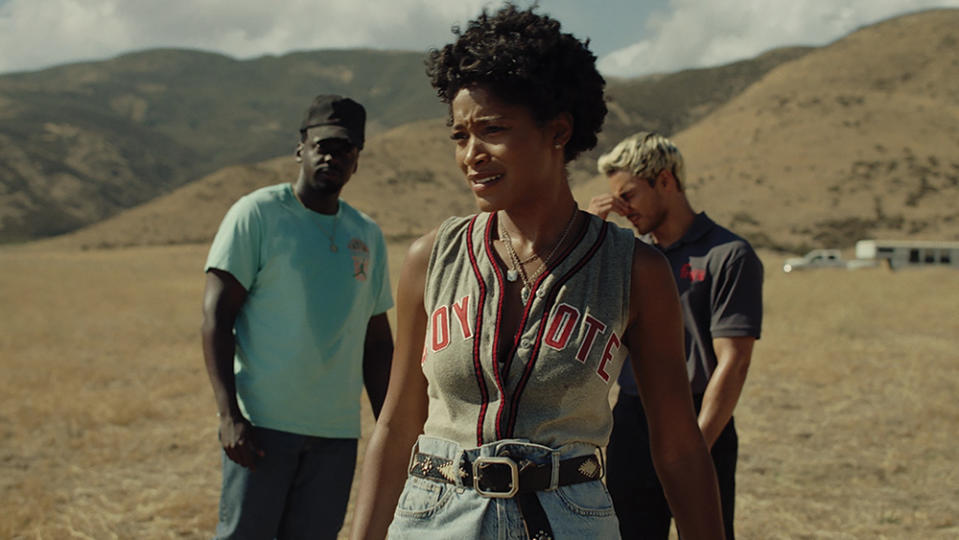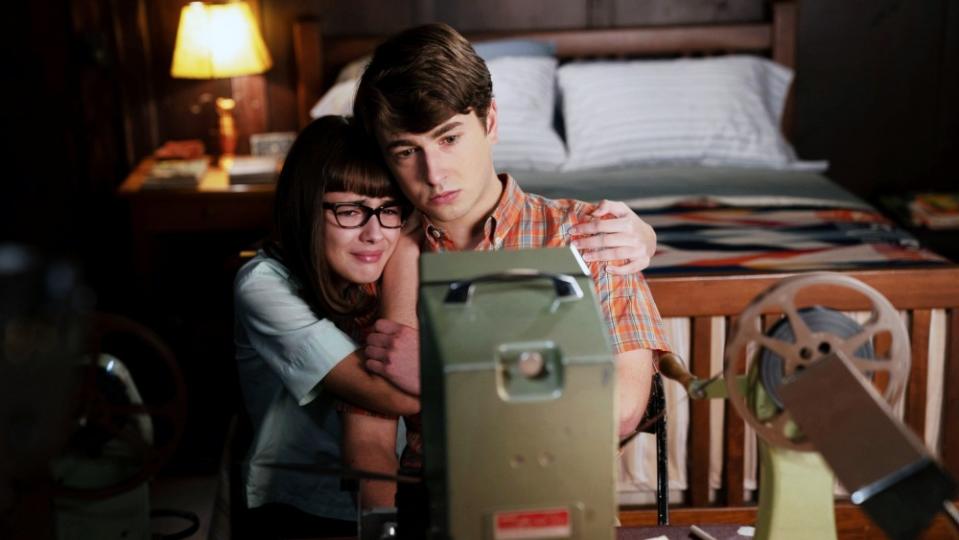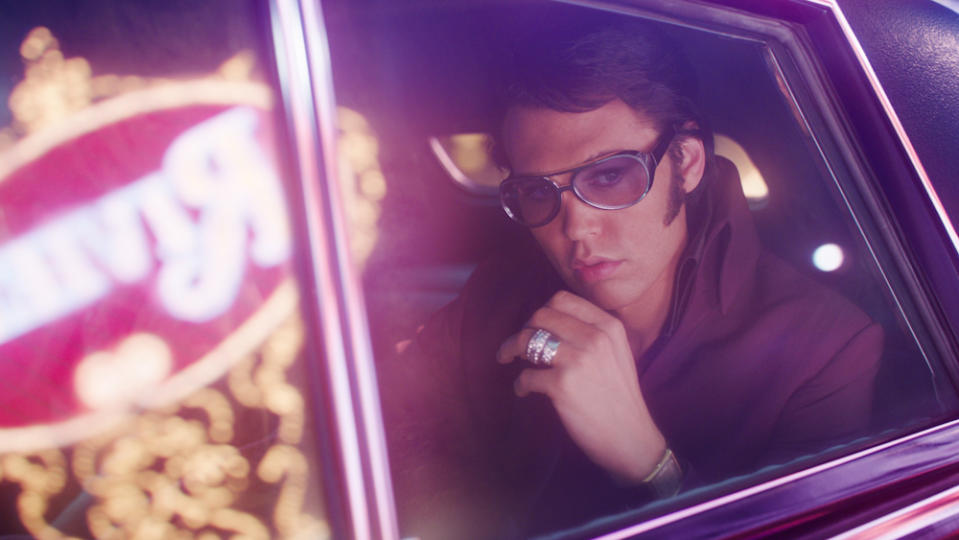‘Irma Vep’: Crafting a Cinematic Hall of Mirrors

When Louis Feuillade’s “Les Vampires” premiered in 1915, escalating the war of attrition between French film companies Pathe and Gaumont — in the middle of the actual armed conflict of World War I — it wasn’t a given that narrative feature films would become the dominant format for cinematic storytelling. In the 1910s, serials were in. It was equally likely, and more economical, for filmmakers to string together hours of storytelling via 12-minute reels that would stand as individual episodes and end on a cliffhanger, prompting the audience to return to the theater next week to see how it all turns out. Film was still as much an emerging technology as it was an art form, one with various and uncertain business models that were being tested simultaneously. Feuillade has more in common with any director working in the Age of Streaming than with Fellini or Ford, and making a “Les Vampires” story again in 2022 consciously positions this newest iteration as part of the history of cinema: It’s always been this nuts.
But of course “Irma Vep,” isn’t just the story of “Les Vampires” told again for a contemporary audience. The HBO show is a story about telling visual stories, following actor Mira Harberg (Alicia Vikander) behind the scenes of a “Les Vampires” remake. She undergoes a transformation as the character of Irma Vep (originally played by Musidora in Feuillade’s serial) and all the pressures of modern filmmaking start to assert themselves. Also, she can walk through walls.
More from IndieWire
“Irma Vep” is full of people watching each other because they need something out of seeing other bodies in motion, whether it’s Mira spying on her exes and lovers, neurotic director René Vidal (Vincent Macaigne) trying to get his ensemble to unlock the murky fantasies he has in his tormented head, the cast and crew all looking at each other for the way to navigate the group make-believe that is being on a film set. “Irma Vep” is all about point-of-view and perspective — how filmmaking allows us to transcend our own, but also all the ways that it lets us delude ourselves, too.
It’s a particularly fine needle-within-a-needle-within-a-needle to thread, but if anyone is equipped to do it, it’s Olivier Assayas. After all, Assayas is adapting his own 1996 film, also a meta making-of comedy-thriller, that one starring Maggie Cheung. Twenty years removed from the original, after a marriage to Cheung and a career that saw him leap from scrappy indie flicks to the top of both Hollywood and European arthouse heap, Assayas isn’t afraid of roasting himself in the form of Vidal, of pointing out the madness and toxic qualities that can come with filmmaking, or of celebrating the alluring qualities and history of cinema. In the videos below, Assayas talks about the importance of honesty and comedy in returning to “Irma Vep.” You’ll also hear Vikander cover all the meta layers required of both Mira/Irma and “Irma Vep,” and composer Thurston Moore discuss the avant-garde sonic landscape that ties this serial back to Assayas’ indie roots and Feuillade’s spectacularly experimental serial.

The Writing of “Irma Vep”
The television version of “Irma Vep” is a reimagining of the 1996 film, albeit one with an extended run time that allows Assayas to delve deeper into the circumstances putting pressure on the lead actress (and everybody else hanging around the set) of a “Les Vampires” remake. His process for structuring the story this time around required candor, cooperation, and comedy. Assayas finds that humor is often the way through larger thematic concerns and serious subjects, the spoonful of sugar that makes the meta-cine go down. “You had better have a solid sense of humor. If you turn it into a comedy, people are ready to listen. You can just make fun of [serious subjects] the same way you make fun of the modern world and the way we live in the modern world,” Assayas told IndieWire. The story’s humor allows the characters’ behavior on the show to get as messy as it does, providing both a margin of safety and an important tonal contrast for Assayas’ observations about the pressures that have, and haven’t, changed for filmmakers.
What is a change is the degree to which the writing of “Irma Vep” was a collaboration. “With a character like Irma Vep, I knew I had to have a collaborator who was creating this character with me and who has the agility to move from one persona to another persona. Alicia is something like 10 different characters in the whole series and also, because Irma Vep herself is an actress, it’s a hall of mirrors,” Assayas said. In the video above, watch Assayas break down all the important elements his writing had to balance and the ways he found, using “Les Vampires” as a blueprint, to draw them all together.

The Acting of “Irma Vep”
Alicia Vikander is primarily a film actor, and an incredibly versatile one at that, but “Irma Vep” allowed the Oscar winner to do the sort of deep character work that’s unique to a medium in which cast members spend so much more time with the person they’re playing. Or persons, in the case of Vikander and “Irma Vep.” Creating the many different versions of Irma/Mira was a joy for Assayas, but it’s ultimately on Vikander to guide the audience through this tour of personas — how they relate to each other, and how they’re all shadows cast by the storytelling process itself.
These shifts between identities are often wordless ones. “I didn’t go to theater school,” Vikander told IndieWire. “I danced for 15 years of my life. That’s my education. That’s where I come from, and it’s storytelling in the same way.” Sometimes she molds her portrayal of these characters to the clothes she’s wearing onscreen, like a velvet variation on the iconic head-to-toe latex ensemble donned by Cheung in the 1996 film. “There’s even a scene about how you put on a costume and there’s a bit of a magic that happens and suddenly the character starts to take over. The clothes make me move differently, and that was definitely what happened with this catsuit.” Movement also helps Vikander show all the ways Mira tries to break free of a career that’s begun to run itself, whether it’s dancing at a club or embodying Musidora in the story’s in-universe film-within-a-film. In the video above, watch Vikander discuss the challenges of taking on such a multifaceted character.

The Score of “Irma Vep”
There’s a suspense story running parallel to the cheeky look at set life in “Irma Vep.” The soul of the lead character is very much on the line and the potential darkness of filmmaking, the fear and uncertainty inherent in any artistic expression, is often carried through the instrumental score by Thurston Moore. Moore’s involvement is another meta element thrown into the mix for the series: He previously lent a track to Assayas’ 1996 film as a member of Sonic Youth. But Moore’s process for composing the music for the 2022 series somehow echoes “Irma Vep” even more strongly, as he did the bulk of the initial work on the series while quarantining for two weeks at a hotel in Australia. “The whole idea of being in forced isolation, it lent a very distinct mood to the whole work that I thought fit with the dark undertow of the series,” Moore told IndieWire.
Moore created a grinding, black metal howl of a soundscape that illustrates the peril lurking behind seemingly benign interactions between cast, crew, and hangers-on, as well as the power latent in Irma Vep herself, who Mira channels as she starts moving through hotel suites with abandon. There’s a kind of “rock ‘n’ roll danger” to much of the music, which allows Moore to evoke dread but also a kind of vicious elation. The track that Moore is proudest of composing for the series is a piece that blends whimsy and gloom to create a waltz worthy of a vampire.
“[Assayas] really allowed me to do what I always really desired to do which was create film music using traditional instrumentation such as guitars and pianos but really treating them and preparing them to be extended in their in their sound worlds,” Moore said. In the video above, watch Moore discuss how his experimental score helped offer a window into the characters’ psyches and a way for the audience to emotionally absorb the more surreal elements of the story.
READ MORE CRAFT CONSIDERATIONS

‘Black Bird’ Creates Uneasy Truths Through Performance, Pace, and Sound
Watch how the editing, cinematography, and sound intensify the real-life story of a suspected serial killer in the Apple TV+ limited series.
By Daron James
May 17, 2023 4:00 pm

‘Nope’: How Keke Palmer Grounded an Out-of-This-World Horror Story
Watch star Keke Palmer discuss how she and filmmaker Jordan Peele figured out how to tell a sibling-bond story with sky-high stakes.
By Marcus Jones
January 9, 2023 3:30 pm

Weaving ‘The Fabelmans’ from Steven Spielberg’s Childhood Memories
Watch Pulitzer Prize winner and Academy Award nominee Tony Kushner discuss translating his longtime collaborator’s life into a screenplay.
By Jim Hemphill
January 5, 2023 2:30 pm

‘Elvis’: Giving New Meaning to the Life and Times of The King
Watch how cinematography, production design, and editing bring Elvis Presley and the culture that exalted him to life.
By Jim Hemphill
December 14, 2022 2:30 pm
Best of IndieWire
Where to Watch This Week's New Movies, from 'The Starling Girl' to 'BlackBerry'
Every Palme d'Or Winner from the Cannes Film Festival, Ranked
Sign up for Indiewire's Newsletter. For the latest news, follow us on Facebook, Twitter, and Instagram.

 Yahoo News
Yahoo News 
